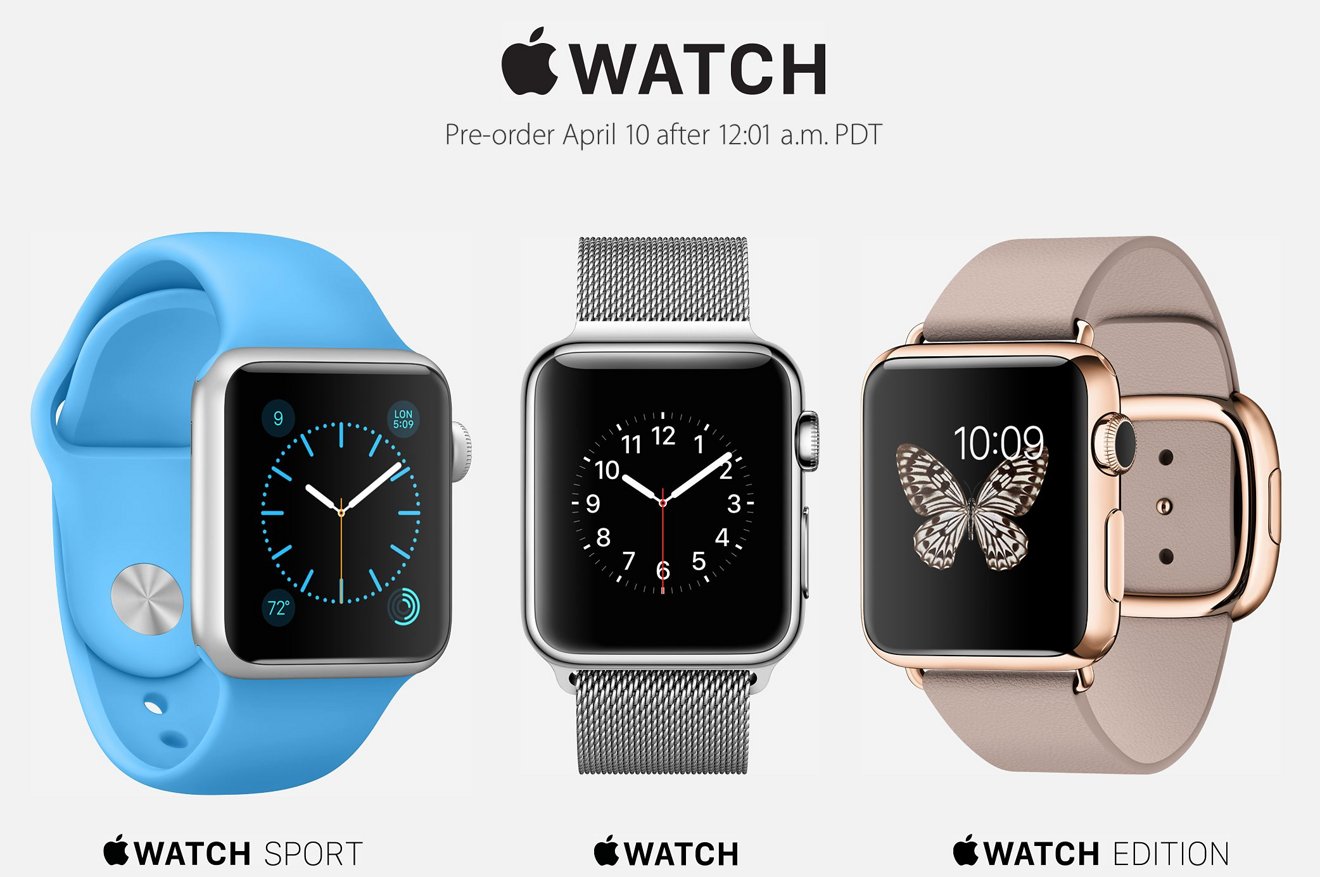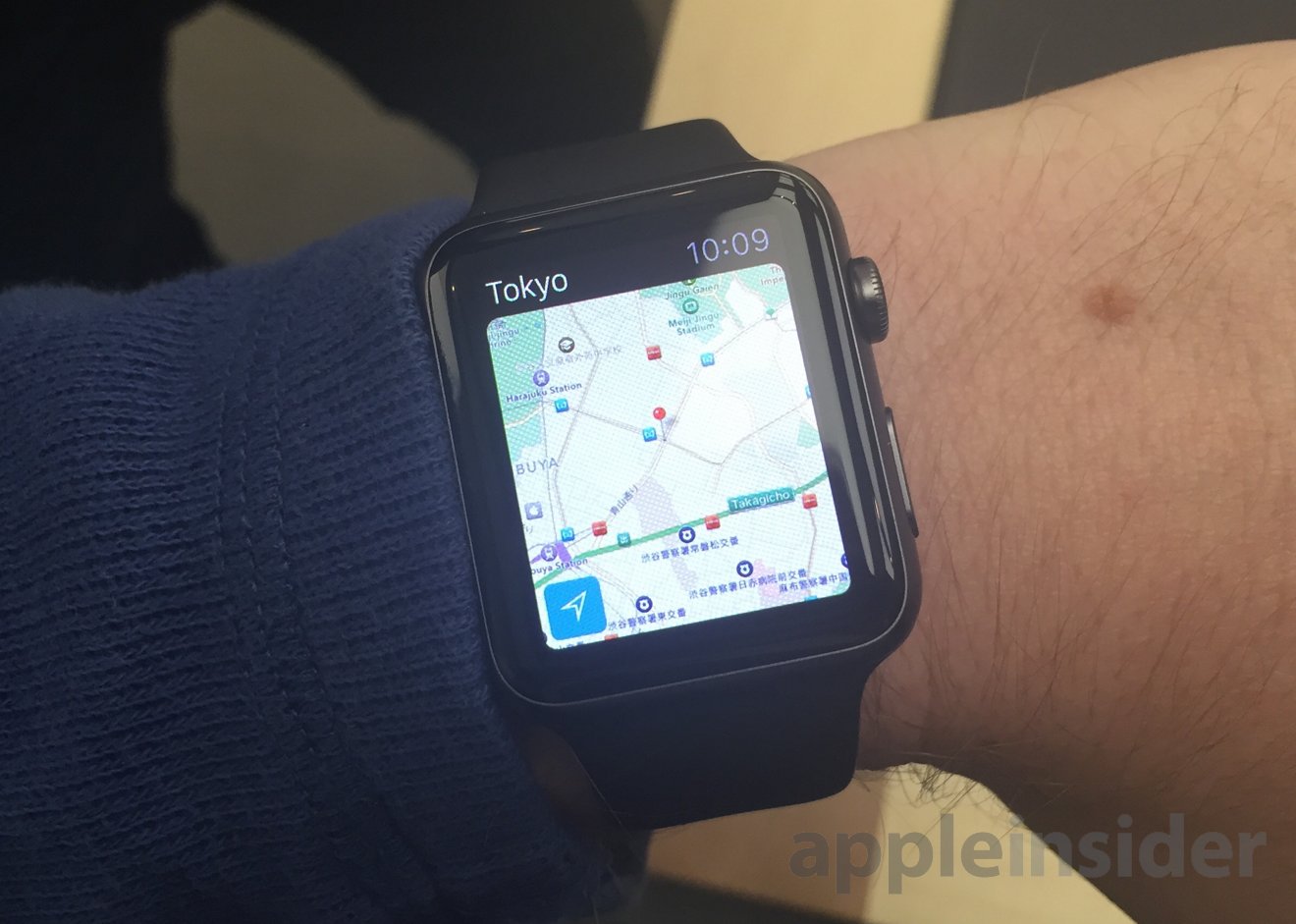Apple is likely taking a conservative approach in building Apple Watch units at launch, in what is essentially a build-to-order situation for the first units, one analyst believes.
Writing at his personal site, longtime Apple watcher Carl Howe proclaimed that he expects the Apple Watch became an overnight multi-billion-dollar business when preorders began earlier this month. As for why units sold out almost immediately, Howe believes Apple is attempting to keep inventory costs low and simultaneously meet consumer demands by manufacturing in response to preorders.
Apple is likely keeping its risks at a minimum, he said, by eliminating unknowns from the manufacturing process. And one of the biggest unknowns is exactly what models will prove popular with consumers, given that Apple is entering into an entirely new product category.
"Building huge inventories of all the models of watches and waiting for consumers to order them risks warehousing large quantities of unsold merchandise. That wastes capital," Howe said. "Instead, I believe Apple will build a smaller number of watches of each type for store and demo use and then do build-to-order final assembly of the actual cases and bands ordered."
When preorders began on April 10, Howe believes that Apple was undertaking an entirely new approach with the launch of the Apple Watch. In his view, Apple is using presale data to determine its final assembly and manufacturing.
His forecast calls for Apple to ship about 3.1 million Apple Watches in the launch period between April 24 and May 8, when most initial orders are projected to arrive. He expects that 1.8 million of those will be the aluminum Sport, 1.3 million will be the stainless steel Apple Watch, and 40,000 will be the pricey 18-karat gold Edition.
He believes initial sales revenue will reach just over $2 billion, with the most revenue — $900 million — coming from the mid-range stainless steel model. And while Apple won't sell a huge number of Edition watches, he believes it will still represent a half-billion dollars in business for the company.
Howe also believes that the Apple Watch will prove to be Apple's most profitable product line ever, with gross margins north of 60 percent.
The Apple Watch will officially arrive this Friday, though consumers can get a preview of the hardware with in-store try-ons available at Apple's retail locations through appointment or walk-in. The wrist-worn accessory starts at $349 for the 38-millimeter Sport model, with prices going as high as $17,000 for the most costly Edition variant.
 Neil Hughes
Neil Hughes





-xl-m.jpg)


-m.jpg)






 Chip Loder
Chip Loder
 Thomas Sibilly
Thomas Sibilly
 Wesley Hilliard
Wesley Hilliard
 Christine McKee
Christine McKee
 Amber Neely
Amber Neely
 William Gallagher
William Gallagher
 Malcolm Owen
Malcolm Owen









52 Comments
That would be a very sensible approach. No need to build inventory that isn't needed, Apple isn't Samsung after all! :D
So the same thing we've been saying here. Well, I guess an analyst has to be right sometimes.
Well they certainly weren't mixing and matching on the fly as pre-orders were being taken. I noticed disparities between the shipping times of watches with certain straps and those same straps as stand alone items. For example, from memory, the SS with Classic Buckle was one of the last to lose it's 4/24 - 8/5 shipping window. But at the same time SS with Milanese Loop would be shipping in June will the Milanese loop by itself would be shipping earlier in May. If Apple was mixing and matching to demand, they could have sold some of their SS watches with the Milanese Loops instead of the Classic Buckles to even out supply.
That would be a very sensible approach. No need to build inventory that isn't needed, Apple isn't Samsung after all!
No... because then Apple would count them as "Sold". :)
Analysts have a habit of making broad, over simplified assumptions from small pieces of data. (such as the ever unreliable "supply chain checks") this is no exception, it's so simple, it's inane. Seemingly ignoring obvious, well supported conclusions in favour for dubious, yet attention grabbing, ones. The idea that Apple were blind to demand before pre-orders commenced is patently incorrect. Apple's own design staff have a history of producing nearly identical bands (see Marc Newson's Ikepod watches.) Thus Apple would know popular options even before purchasing watch sales data/research. Apple also had a trove of potential buyers using the Apple Store app to register their preferred option well before pre-orders became available. It's a gross oversimplification to suggest that Apple prebuilt very few models and over relied on pre-orders to direct construction. Firstly this doesn't reflect the lead time to produce each watch housing before launch day deliveries, and secondly this would also mean that all watches in back order would have a similar wait time. Instead there are noticeable differences between similar models. Certainly Apple would be tuning production to the popular pre-order models, however the much more likely reason why the watches sold out so quickly is very simple: The launch was very successful.